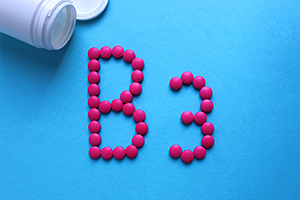



| By Dr. Ronald Hoffman
Literally millions of women and girls (and a few boys and men) have at least one episode of acute bladder infection (“cystitis”) each year. Routine treatment of bladder and kidney infections involves antibiotics and antimicrobials. D-Mannose helps to maintain a healthy urinary tract.*
D-Mannose is a naturally occurring simple sugar, closely related (in chemical terms, a “stereoisomer”) to glucose. Small amounts of D-Mannose are metabolized by our bodies; more than small amounts are excreted promptly into the urine. But how can even large quantities of a simple natural sugar do anything at all to help maintain a healthy urinary tract?*
The answer is found in the interaction between D-Mannose and the bacterium found in more than 90 percent of all bladder infections, Escherichia coli (“E. coli”). No, that’s not the infamous E. coli mutants associated with unsanitary food processing that has hospitalized and killed people. It’s the normal E. coli found as part of the “normal microflora” in every intestinal tract. But even normal E. coli do not belong in the bladder and urinary tract. In these areas they multiply and become an undesirable infection.*
Why doesn’t the normal down flow of urine from the kidneys through the ureter into the bladder and thence beyond simply carry the E. coli right along with it? What allows the E. coli to “stick” to the inner walls of the bladder and even work their way upward (like Spider-Man) in some cases reaching as far as the kidneys?*
The “cell walls” of each E. coli are covered with tiny fingerlike projections. The very tips of these projections are an amino acid-sugar complex, a “glycoprotein” also called a “lectin.” E. coli “lectins” have the unfortunate (for us) capability of “sticking” the bacteria to the inside walls of our bladders and urinary tracts so they can’t be rinsed out by urination. Unfortunately for the E. coli, D-Mannose “sticks” to E. coli lectins even better than E. coli lectin “sticks” to human cells. When we take a large quantity of D-Mannose, almost all of it spills into the urine through our kidneys, literally “coating” any E. coli present so they can no longer “stick” to the inside walls of the bladder and urinary tract. The E. coli are literally rinsed away with normal urination!*
An antibiotic kills unwanted micro-organisms, but it also kills many “friendly” micro-organisms. Every woman is familiar with “yeast infections” that follow antibiotic use, as the “friendly bacteria” are killed off along with the “bad bacteria,” leaving the antibiotic-insensitive yeast to grow “out of control.” Long-term or often-repeated antibiotic use can lead to major disruptions in normal body microflora and sometimes to major disruptions in health, especially immune system function. (It is suspected that “killer” E. coli of recent years are “mutants” caused by persistent antibiotic feeding to animals.)*
By contrast, D-Mannose does not kill bacteria, “friendly” or “unfriendly.” D-Mannose simply helps to relocate misplaced E. coli from inside of the urinary tracts to outside. (Since D-Mannose is absorbed in the upper gastrointestinal tract, it doesn’t relocate the “friendly” E. coli normally present in the colon.) Use of D-Mannose is ecologically sound. The small amount of D-Mannose metabolized by the body and not excreted into the urine is harmless. As an extra bonus, D-Mannose tastes good!*
*These statements have not been evaluated by the Food and Drug Administration. This product is not intended to diagnose, treat, cure or prevent any disease.
This information has been extracted from the publishings of Dr. Jonathan Wright who works with Bio-Tech to bring you this product.
Though we think of declining estrogen as the hallmark of menopause, it's actually common for…

Up to 12 percent of Americans have ulcers at some point in life. Peptic ulcers…
Gallbladder disease is a modern illness. An estimated 20 million Americans have gallbladder disease. The…

This past week we were regaled with headlines like: High levels of niacin may increase…

March is National Nutrition Month and, needless to say, good nutritious food is essential to…

I recently attended the Integrative Healthcare Symposium (IHS), an annual conference held here in Manhattan. The…

Q&A with Leyla, Part 1: A Nicotine Vaccine

Our virtual voicemail is open 24/7, so there's no need to wait to submit your questions for Dr. Hoffman. Leave a message, and you may hear your question featured on the Intelligent Medicine radio program!